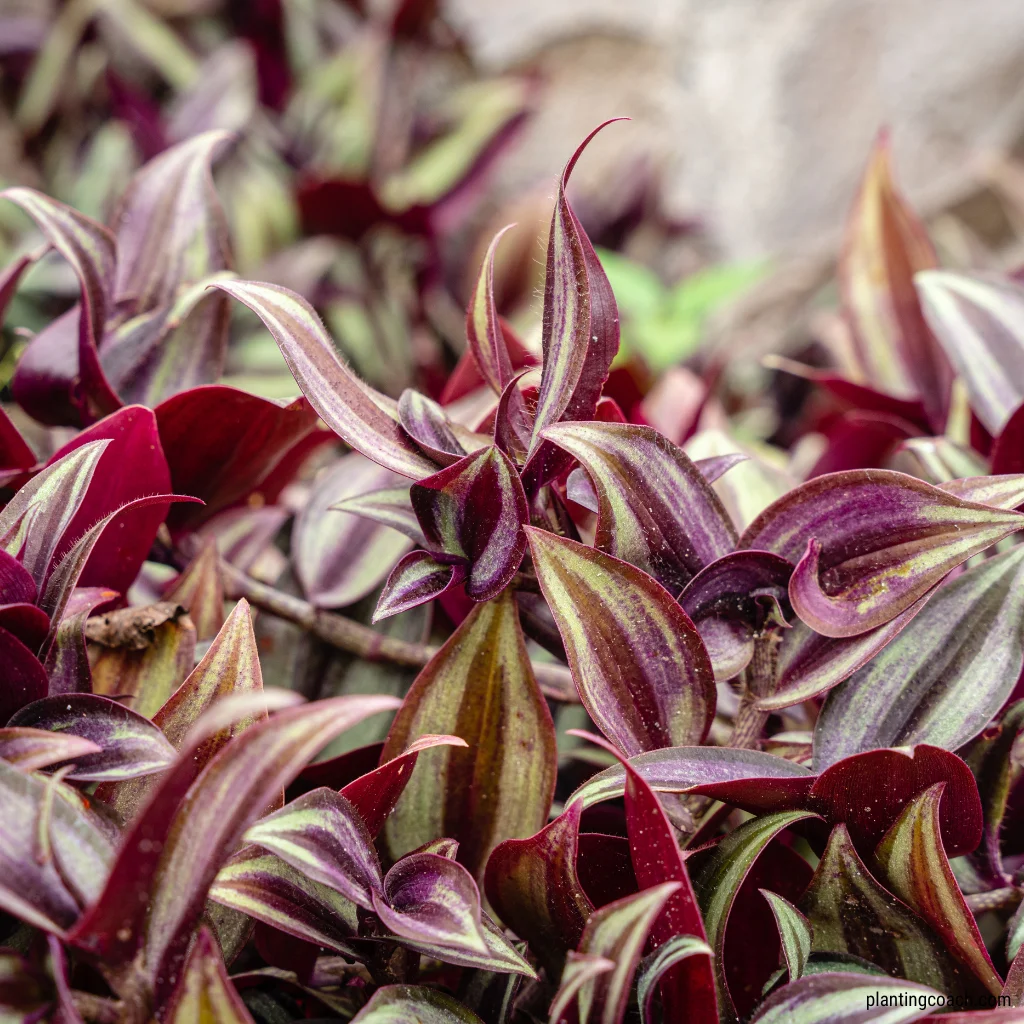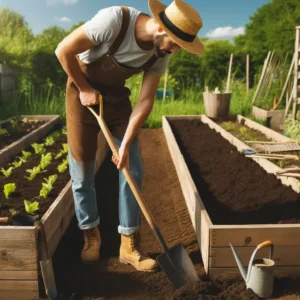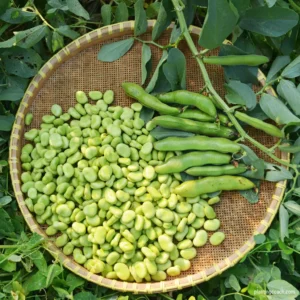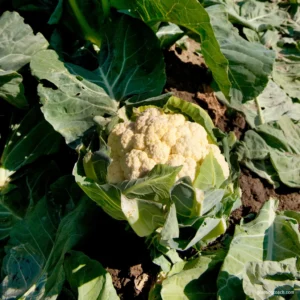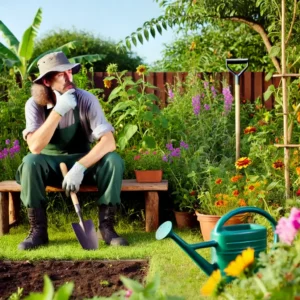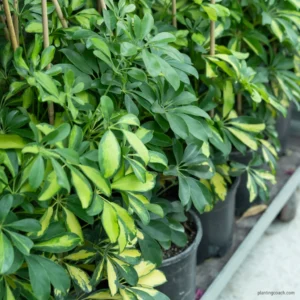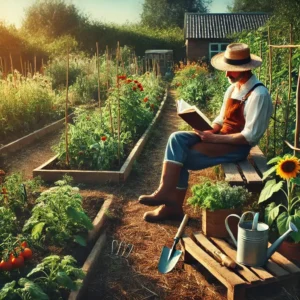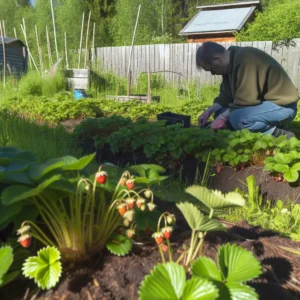Tradescantia, also known as spiderwort, is a popular and attractive houseplant known for its beautiful foliage and ease of care. This versatile plant is perfect for both novice and experienced gardeners, offering vibrant colors and unique patterns. Tradescantia includes various species, each with distinct characteristics, making it a versatile choice for different gardening needs. Known for its resilience and adaptability, Tradescantia can thrive both indoors and outdoors, adding a touch of greenery to any space. Its trailing habit makes it ideal for hanging baskets, while its striking leaves can create a stunning ground cover in garden beds.
This complete guide will walk you through everything you need to know about grow and Care for Tradescantia, from planting and watering to dealing with common issues. Whether you’re looking to add a splash of color to your home or garden, this article will help you keep your Tradescantia thriving and healthy.
How to Grow and Care for Tradescantia
Understanding Tradescantia
Tradescantia, commonly referred to as spiderwort, is a genus of about 75 species of herbaceous perennial plants in the family Commelinaceae. These plants are native to the New World, ranging from southern Canada to northern Argentina. Tradescantia plants are prized for their stunning foliage and ease of care, making them a popular choice for both indoor and outdoor gardens.

Tradescantia plants feature long, trailing stems with leaves that vary in color from green to purple, often with striking variegated patterns. The flowers, although small and short-lived, are typically blue, purple, or white and add a charming touch to the plant’s overall appearance. Understanding the basic characteristics of Tradescantia will help you provide the best care for your plant.
Different Tradescantia Plant Types
Tradescantia encompasses a variety of species, each with unique characteristics. Here are some popular Tradescantia plant types:
Tradescantia Zebrina
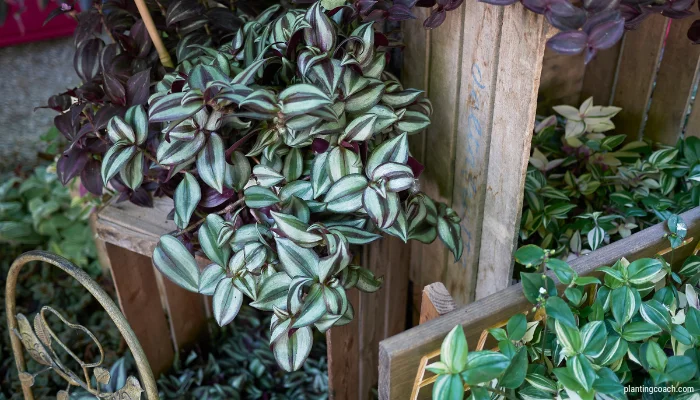
Also known as the wandering Jew, Tradescantia zebrina features striking purple and silver-striped leaves. It is a popular choice for hanging baskets and containers due to its trailing growth habit.
Tradescantia Pallida

Commonly known as the purple heart, Tradescantia pallida boasts deep purple leaves and pink flowers. It is a hardy plant that can thrive in various conditions and is often used as ground cover or in containers.
Tradescantia Fluminensis
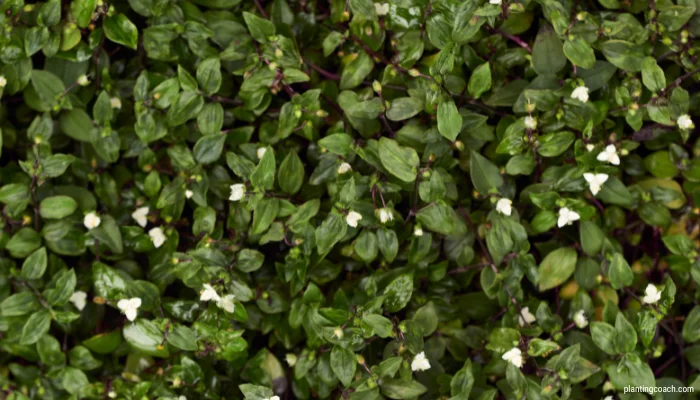
Tradescantia fluminensis, also known as the inch plant, has glossy green leaves with white stripes. It is a fast-growing, trailing plant that is ideal for hanging baskets and ground cover.
Tradescantia Spathacea

Known as boat lily or Moses-in-the-cradle, Tradescantia spathacea features rosettes of lance-shaped leaves with purple undersides. It is a striking plant that adds a touch of drama to any garden or indoor space.
Optimal Conditions for Growing Tradescantia
Providing the right growing conditions is crucial for the health and vitality of your Tradescantia plant. Here are the key factors to consider:
Soil
Tradescantia thrives in well-draining soil that retains some moisture but does not become waterlogged. A standard potting mix with added perlite or sand works well. You can also use a cactus or succulent mix for better drainage. Adding organic matter, such as compost, can improve the soil’s fertility and structure.
Sunlight
Tradescantia prefers bright, indirect light. While it can tolerate low light conditions, its growth may slow, and the vibrant colors of the leaves may fade. Avoid placing the plant in direct sunlight, especially during the hottest part of the day, as this can scorch the leaves. A north or east-facing window is ideal for indoor Tradescantia plants.
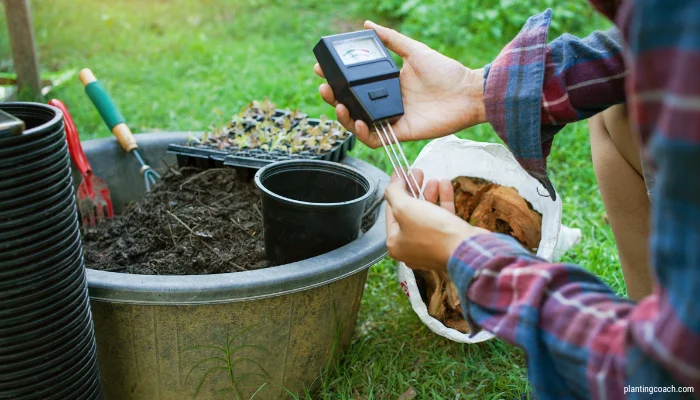
Temperature and Humidity
Tradescantia plants thrive in temperatures between 65-75°F (18-24°C). They can tolerate occasional drops in temperature but are not frost-hardy. If you’re growing Tradescantia outdoors, bring the plants inside when temperatures approach freezing. Tradescantia also prefers high humidity levels. To maintain adequate humidity, especially in dry indoor environments, mist the plant regularly or use a humidity tray.
Drainage
Proper drainage is essential to prevent root rot, a common issue with Tradescantia. Ensure that the pot has drainage holes, and avoid using saucers that retain water. Using a well-draining potting mix and watering appropriately will help maintain healthy roots.
Planting Tradescantia Plants
Planting Tradescantia properly is crucial for establishing a healthy and thriving plant. Follow these steps to plant your Tradescantia:
Choosing the Right Location
Select a location that provides bright, indirect light. If planting outdoors, choose a spot that receives morning sun and afternoon shade. For indoor plants, place them near a north or east-facing window where they can receive filtered sunlight.
Preparing the Soil
Prepare the soil using a standard potting mix with perlite or sand for improved drainage. If planting in the ground, ensure the soil is well-draining and enriched with organic matter. Loosen the soil to a depth of about 12 inches and mix in compost to enhance fertility.

Planting Techniques
- For Potted Plants: Choose a pot with drainage holes. Fill the pot with the prepared soil mix, leaving enough space for the root ball. Place the Tradescantia plant in the pot, ensuring the roots are spread out. Fill in around the root ball with soil, pressing gently to remove air pockets. Water thoroughly after planting to help the soil settle.
- For Ground Planting: Dig a hole slightly larger than the root ball. Place the Tradescantia plant in the hole, ensuring the crown is at ground level. Fill in around the plant with soil, pressing gently to eliminate air pockets. Water thoroughly to help the plant establish.
Watering and Feeding Tradescantia Plant Care
Proper watering and feeding are essential for Tradescantia plant care. Here’s how to keep your plant hydrated and nourished:
Watering
Tradescantia prefers consistently moist soil but does not tolerate waterlogged conditions. Water the plant when the top inch of soil feels dry. During the growing season (spring and summer), you may need to water more frequently, while in the winter, reduce the watering frequency as the plant’s growth slows.
- Indoor Plants: Water thoroughly, allowing excess water to drain out of the pot. Avoid letting the plant sit in water, which can lead to root rot. Use room-temperature water to avoid shocking the roots.
- Outdoor Plants: Water deeply and regularly, especially during dry spells. Mulch around the base of the plant to retain moisture and suppress weeds.

Feeding
Tradescantia plants benefit from regular feeding during the growing season. Use a balanced, water-soluble fertilizer diluted to half strength every 4-6 weeks. This will provide the necessary nutrients to support healthy growth and vibrant foliage. Avoid over-fertilizing, as this can lead to excessive leaf growth at the expense of flowers.
Caring for Tradescantia Fluminensis
Tradescantia fluminensis, or inch plant, is a popular species known for its glossy green leaves and vigorous growth. Here are specific care tips for Tradescantia fluminensis:
Light and Temperature
Tradescantia fluminensis thrives in bright, indirect light but can tolerate low-light conditions. Avoid direct sunlight, which can scorch the leaves. It prefers temperatures between 65-75°F (18-24°C) and high humidity.
Watering
Keep the soil consistently moist but not waterlogged. Water when the top inch of soil feels dry. Tradescantia fluminensis is more tolerant of occasional drought than overwatering, which can lead to root rot.
Feeding
Feed Tradescantia fluminensis with a balanced, water-soluble fertilizer diluted to half strength every 4-6 weeks during the growing season. Reduce feeding during the winter months.

Pruning and Propagation
Regular pruning helps maintain the plant’s shape and encourages bushier growth. Pinch back the tips of the stems to promote branching. Tradescantia fluminensis is easy to propagate through stem cuttings. Simply cut a healthy stem with a few leaves and place it in water or moist soil. Roots will develop within a few weeks.
Pruning and Maintaining Tradescantia Plants
Pruning and regular maintenance are essential for keeping your Tradescantia plants healthy and attractive. Here’s how to maintain your plants:
Pruning
Regular pruning helps control the size of the plant, encourages bushier growth, and removes dead or damaged leaves. Use clean, sharp scissors or pruning shears to make precise cuts.
- Pinching: Pinch back the tips of the stems to promote branching and fuller growth. This is especially useful for trailing varieties like Tradescantia zebrina.
- Removing Dead Leaves: Regularly remove yellowing or dead leaves to improve the plant’s appearance and reduce the risk of pests and diseases.
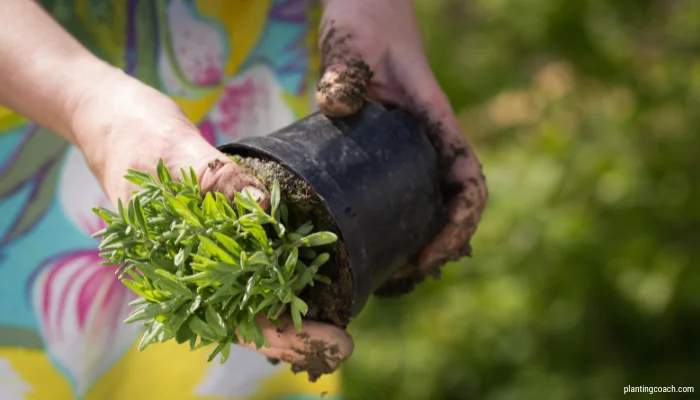
Maintenance
- Cleaning Leaves: Dust can accumulate on the leaves, affecting the plant’s ability to photosynthesize. Wipe the leaves gently with a damp cloth to keep them clean and shiny.
- Checking for Pests: Inspect your Tradescantia regularly for pests such as spider mites, aphids, and mealybugs. Use insecticidal soap or neem oil to treat infestations.
- Repotting: Tradescantia plants may need repotting every 1-2 years as they outgrow their containers. Repot in a slightly larger pot with fresh, well-draining soil.
Troubleshooting Common Problems with Tradescantia Plants
Even with the best care, Tradescantia plants can encounter issues. Here are some common problems and how to solve them:
Yellowing Leaves
Yellowing leaves can be caused by overwatering, underwatering, or nutrient deficiencies. Check your watering schedule and ensure the plant is receiving balanced nutrition.
Leggy Growth
Leggy growth is often due to insufficient light. Move the plant to a brighter location with indirect sunlight. Prune back the stems to encourage bushier growth.
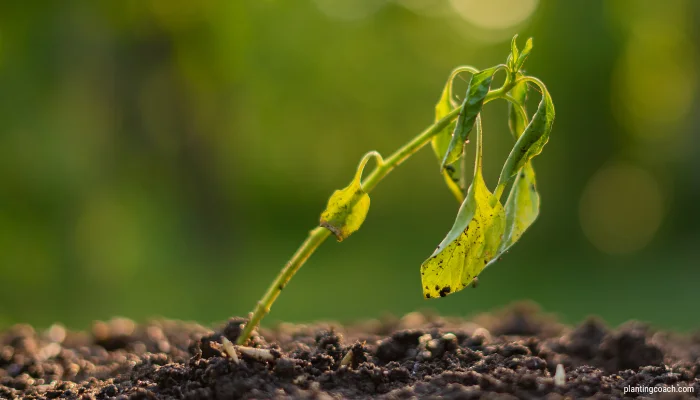
Pests
Tradescantia plants can be affected by pests such as spider mites, aphids, and mealybugs. Treat infestations instantly with insecticidal soap or neem oil. To prevent pest problems, regularly inspect the plant and keep it clean.
Root Rot
Root rot is caused by overwatering and poor drainage. Ensure the pot has drainage holes and the soil is well-draining. Allow the top inch of soil to dry out between waterings to prevent root rot.
Summary
Growing and caring for Tradescantia is a rewarding experience that brings vibrant colors and unique foliage into your home or garden. By understanding the optimal conditions for planting, watering, feeding, and maintaining your Tradescantia plants, you can ensure they thrive. Regular pruning and pest management will keep your plants healthy and attractive. Whether you’re enjoying the striking leaves of Tradescantia zebrina or the glossy green foliage of Tradescantia fluminensis, the effort you put into caring for your Tradescantia will be well worth it.
FAQ
Q1: Do Tradescantia like full sun?
- Tradescantia prefers bright, indirect light but can tolerate some direct morning sunlight. Avoid intense afternoon sun as it can scorch the leaves.
Q2: Is Tradescantia easy to grow?
- Yes, Tradescantia is known for being easy to grow and maintain, making it a great choice for both beginner and experienced gardeners.
Q3: How do you make Tradescantia grow faster?
- To encourage faster growth, provide bright, indirect light, maintain consistent moisture, and feed regularly with a balanced fertilizer during the growing season.
Q4: What is the best fertilizer for Tradescantia?
- A balanced, water-soluble fertilizer diluted to half strength is ideal for Tradescantia. Fertilize every 4-6 weeks during the growing season.
Q5: Where is the best place to plant Tradescantia?
- The best place to plant Tradescantia is in a location with bright, indirect light. For indoor plants, a north or east-facing window is ideal. For outdoor plants, choose a spot with morning sun and afternoon shade.
